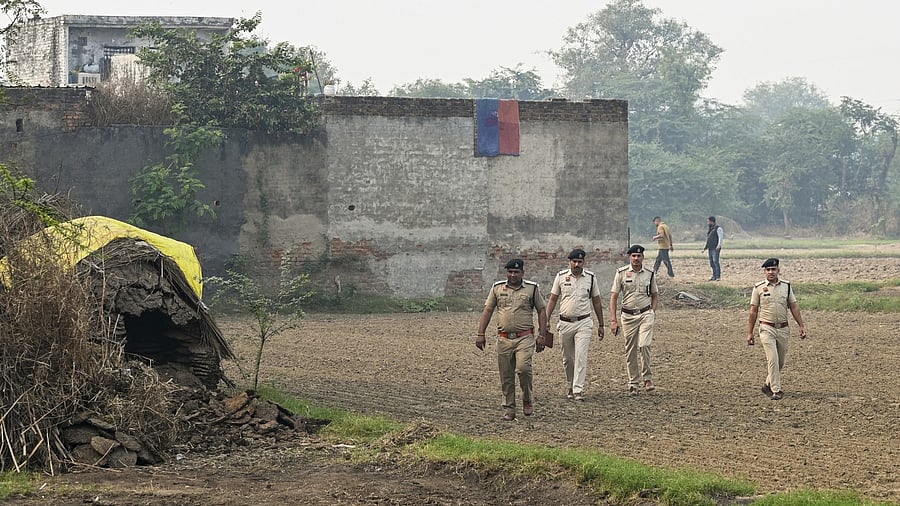
The J&K police were bang on target in their operations.
Credit: PTI Photo
Srinagar: It began with a few Jaish-e-Mohammad (JeM) posters pasted on a wall in Srinagar. Three weeks later, it ended with the discovery of 2,900 kilograms of explosive chemicals in a doctor’s house over a thousand kilometres away in Faridabad, Haryana.
What appeared at first to be routine terror propaganda turned into a stunning counter-terror breakthrough — exposing a network that stretched from Kashmir to the national capital region (NCR) and beyond.
At its centre were two Kashmiri doctors, both trained professionals, who investigators say were quietly building a logistics chain for Pakistan-backed terror outfits.
It all started on October 19, when police in Bunpora area of Nowgam, on the outskirts of Srinagar, spotted freshly pasted JeM posters threatening “revenge attacks.” Police scanned CCTV footage from the area — and that is where the first lead surfaced.
“During examination of the footage, we found clues pointing to a Kashmiri doctor working in Faridabad,” a senior officer told DH. The suspect was identified as Dr Muzamil Ahmad Ganai, a Pulwama native serving in the Emergency Department of Al Falah Hospital in Faridabad.
A team of J&K police travelled to Haryana last week and picked up Ganai for questioning. Within hours, he allegedly confessed to having stored “some chemical material” at his residence. When police broke into his flat, they were stunned.
Inside were sacks of ammonium nitrate, sulphur, and aluminium powder — ingredients for powerful improvised explosive devices — stacked alongside timers, detonators, and remote-control circuits, sources said. There was also a rifle and several communication gadgets.
“This was not just a cache; it was an entire bomb factory hidden in plain sight,” the officer said.
Ganai’s interrogation revealed another name — Dr Adeel Rather, a fellow Kashmiri from Qazigund. He had worked as a senior resident at Government Medical College (GMC) Anantnag before moving to a private hospital in Saharanpur, Uttar Pradesh.
A second team was dispatched, and Rather was arrested soon after. Based on his disclosure, police raided a locker at GMC Anantnag that was once under his use. To their shock, they found an AK-47 rifle carefully wrapped and stored there.
Investigators believe the two doctors were part of a “white-collar terror module”—educated, urbane, and unsuspected, providing cover and logistics for the JeM-Ansar Ghazwat-ul-Hind (AGuH) network.
Senior officials describe the case as a turning point in understanding how militant groups are evolving. “This is not about gunmen in forests anymore,” said one officer. “This is about professionals — doctors, engineers, teachers — using their social legitimacy to build and hide the infrastructure of terror.”
Police suspect the duo were in touch with handlers across the border through encrypted apps, receiving funds through informal hawala channels. Forensic teams are now analysing their phones, laptops and chemical samples to trace the full supply chain.
What began as a few Jaish posters on a Srinagar wall has peeled back the cover on a new kind of militancy — one that hides behind hospital coats, crosses state borders, and trades in chemicals instead of slogans.